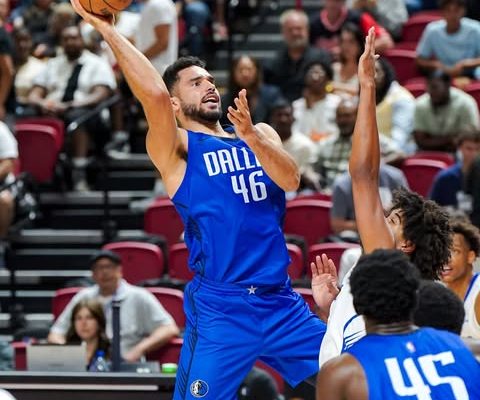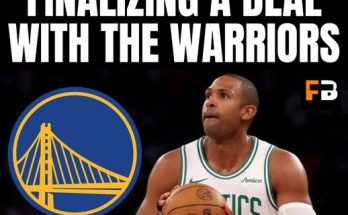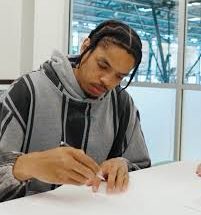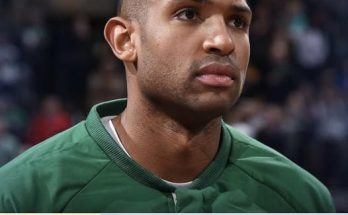The Dallas Mavericks have long been a franchise built around transcendent individual talent. From Dirk Nowitzki’s methodical and revolutionary brilliance to Luka Dončić’s improvisational flair and statistical dominance, Dallas has always relied on having a singular star carry the bulk of the load. But in recent seasons, especially following playoff exits and chemistry questions, an uncomfortable truth has emerged—one that a well-placed insider finally articulated with sobering clarity: “Your problem is the lack of collective creativity.” That statement, though it may appear vague or even philosophical at first glance, carries weight far beyond soundbite value. It strikes at the root of what ails the Mavericks—and why their rosters, even with all-star-level talent, continue to fall short when the lights are brightest.
To understand what this insider meant, it’s necessary to break down the components of collective creativity, especially in the context of modern basketball. Unlike individual creativity, which often refers to a player’s ability to create a shot, read the defense, or generate offense out of nothing, collective creativity is a far more intricate and interconnected phenomenon. It speaks to the ecosystem of shared intelligence on the court. It’s the ability of five players to read, react, and make synchronized decisions, often in real time, to create a flow of basketball that transcends set plays or isolated brilliance. And for all of Luka Dončić’s greatness—and he is unquestionably one of the most talented players in the world—the Mavericks have not demonstrated the ability to create together. That, in essence, is the elephant in the room.
The Mavericks’ recent playoff exits showcase a recurring pattern: defenses key in on Luka, dare others to beat them, and Dallas often falters. Even with Kyrie Irving added to the mix, who is another master of isolation and ball-handling wizardry, the offense still too often devolves into a “your turn, my turn” rhythm that becomes predictable. In regular-season play, where talent disparities and mismatches can be exploited more easily, this can work. In the playoffs, when every possession is contested, scouted, and broken down to the frame, this lack of unpredictability becomes a fatal flaw. What’s missing isn’t just movement or shooting—it’s shared imagination.
Take the Golden State Warriors during their championship years. While they had Stephen Curry, Klay Thompson, and Draymond Green—each gifted in their own right—what made them terrifying wasn’t just individual skill. It was the symphony of decisions: Curry’s off-ball relocation, Green’s split-second passing, Thompson’s perfectly timed cuts. They played jazz on hardwood. Everyone moved with purpose, anticipated the next action, and made reads based on the same mental playbook. That’s collective creativity in action. It allows teams to break defenses without brute force, to win not just with talent but with ideas. Dallas, in contrast, often resembles a solo act with a backing band.
Some might argue that this is a system problem—a coaching issue. But Jason Kidd, for all his polarizing tendencies, has shown a willingness to adapt, experiment, and allow stars to play freely. The problem lies more in the roster construction and the developmental culture around the team. The Mavericks have not consistently prioritized high-IQ, instinctive role players who can read the game and play off one another. Their lineups too often consist of shooters who wait in the corner, or bigs who roll predictably to the rim without a secondary read. There’s little improvisation outside of Luka and Kyrie. And even they sometimes appear disconnected in their sequencing.
In organizations where collective creativity is baked into the DNA—think San Antonio Spurs under Popovich—players are taught from day one to think as a unit. The ball doesn’t stick. Movement is expected, not optional. Everyone touches the ball not just because it’s egalitarian, but because it’s strategic. Defensive attention shifts. Matchups get blurred. The game becomes unpredictable. In Dallas, ball movement is too often a reaction to pressure rather than a foundational principle. Players pass because they must, not because they’re anticipating a better shot three passes ahead.
This insider comment isn’t just about a tactical shortfall—it’s a philosophical indictment. Basketball at the highest level requires a kind of humility. The willingness to be part of a larger scheme, to make the extra pass even if it means fewer touches, to cut hard knowing you might not get the ball but your movement creates space for someone else. It requires trust, repetition, and shared vision. In the Mavericks’ system, much of that has been substituted with hierarchy. Luka gets the ball. He creates. If doubled, he kicks out. If not, he scores. Everyone else orbits around him.
That formula can generate success—it already has. Luka’s numbers are historic. Dallas made a Western Conference Finals run in 2022 on the back of hot shooting and elite isolation play. But the sustainability of this model is questionable. Opposing teams have more data. They understand how to crowd Luka’s space, how to funnel actions into help, how to exploit Dallas’ overreliance on individual solutions. Without a collective counterpunch, the Mavericks look stale under duress. When Luka is exhausted, injured, or simply off his game, the offense can sputter.
There’s also the emotional toll. A lack of collective creativity isn’t just about tactics—it affects morale. Role players thrive when they feel involved. Movement generates rhythm. When everyone touches the ball, everyone is more engaged on defense, more willing to rebound, more connected as a unit. Dallas has at times looked like five strangers playing in unison only by coincidence. That’s not an effort issue—it’s structural. Without a system that encourages read-and-react synergy, the default becomes passivity. “Stand and watch Luka.” That phrase, often tossed around by analysts and fans alike, says it all.
In addressing this problem, Dallas must first change its talent evaluation framework. It’s not enough to find shooters or athletes—they need thinkers. Players like Josh Green have shown flashes of connective intelligence, but they need more. They need wings who can make second-side decisions, bigs who can pass from the elbows, and guards who can both score and facilitate within a broader scheme. It’s not about replacing Luka or diminishing his brilliance—it’s about surrounding him with players who amplify the overall IQ of the unit.
There’s also a development angle. Young players in Dallas are not consistently brought along with the express purpose of integrating them into a flowing offense. Too often, the onus is on them to prove they can “fit with Luka” rather than asking how Luka can be integrated into a broader team ethos. That framing matters. It sends a signal that Luka is the system, not part of one. Great players like Tim Duncan or Steph Curry were undeniably the best on their teams—but their systems didn’t stop at them. They trusted the others. They created systems in which their greatness could shine alongside the growth of everyone else.
Coaching can help here, but only if the front office aligns with that vision. If Nico Harrison and the Mavericks’ leadership genuinely want to address this problem, they must think long-term. Trades for flashy names won’t fix a systemic creative deficit. They need glue guys, thinkers, and versatile role players who thrive in motion offenses. Think of what Bruce Brown did for Denver or what Donte DiVincenzo brought to the Knicks: unselfish, smart basketball that raises the floor and ceiling simultaneously.
It’s also time to have the conversation with Luka. He is no longer the prodigious young talent learning the ropes. He is the face of the franchise, a veteran by experience if not by age. Greatness demands evolution. If Luka wants to win titles—not just MVPs or statistical accolades—he must buy into a system that distributes responsibility. That doesn’t mean taking the ball out of his hands, but it does mean empowering others to make plays, giving up the rock early, and trusting in a style of basketball that doesn’t always revolve around a singular mind.
Kyrie Irving, for all the talk around his eccentricities, has shown that he can play within a creative structure when properly incentivized. His time in Cleveland with LeBron and in Boston under Brad Stevens showed that he can cut, pass, and operate within flow—when the structure supports it. If Dallas can build that kind of shared rhythm between him and Luka, they have a chance to flip the narrative. But that will take commitment—from coaching staff, from leadership, and from the stars themselves.
Culture change doesn’t happen overnight. But it starts with a moment of clarity. That insider’s comment—blunt, perhaps even harsh—might just be that moment for Dallas. “Your problem is the lack of collective creativity.” It’s a challenge to do more than rely on talent. It’s a demand for teamwide growth. For movement. For imagination. For connectedness. The Mavericks have the individual brilliance. What they need now is the courage to build a system that allows them to become more than the sum of their parts.
Because in today’s NBA, brilliance isolated is brilliance limited. Champions are built not just on stars, but on synergy. Not just on shot-making, but on shared minds. Until Dallas embraces that truth, they’ll continue to shine in the regular season, tease promise in the playoffs, and ultimately fall short of their championship aspirations. The ball, as always, is in their court.



